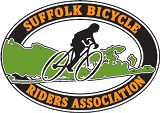No More Junk Miles
June 01, 2014
by Gabe Mirkin, MD
0 Comment
You can always continue to learn, no matter how old you are. I am 79 and Diana is 72. We like to ride a bike as fast as we can. I thought that I understood training, and we followed the rules we believed in, but our race times kept getting slower and slower.
We know that to make muscles stronger, you have to damage them by exercising them against great force. That means your muscles have to burn at some point when you train. We know that to improve your ability to take in and use oxygen, you have to exercise so vigorously that you must become short of breath.
However, every time that you exercise intensely, you damage your muscles. You know this has happened when your muscles feel tight, heavy or sore on the next day. To deal with this soreness, we followed a program of racing as fast as we could three times a week (Tuesdays, Thursdays and Saturdays). On the other four days we would recover by riding 20 to 30 miles slowly, at about 10 to 11 miles per hour. But something was wrong with this program because we were gradually losing our ability to ride as fast as we had in a previous year. We were doing too many junk miles on our four recovery days each week.
What Are Junk Miles?
Junk miles means adding extra miles to your training plan with no purpose other than to increase the number of miles that you ride or run each week. They are done at such low intensity that you do not become short of breath and you do not push yourself very hard. Slow riding or running does not increase your ability to take in and use oxygen and it does not make your muscles stronger.
Try to Go Fast Every Day
So we changed our schedule. We continued to race in a group almost as fast as we could ride three days a week. We then started to do intervals on the other four days. Intervals mean to ride a short distance fast enough to make you very short of breath. Then you slow down until you recover your breath, and keep on alternating short fast bursts with slow recoveries until your legs start to feel stiff and heavy. Then you stop the workout for that day.
Virtually all competitive athletes use some form of interval training. Training is specific and the faster you ride or run in training, the faster you can go in competition. You can go much faster in all-out short bursts than you can go in a long continuous fast ride.
On some interval days, we would do 50 pedal-stroke repeats, resting between each long enough to get our breath back. Other days we would do 100 or 150 pedal stroke repeats. We never plan to do a fixed number of intervals. Instead we would stop the intervals as soon as our legs started to feel heavy or stiff, or when our legs did not recover and continued to feel tired a minute after finishing a fast interval.
When Your Legs Feel Heavy, Take the Day Off
We know that you can’t go intensely every day. There are some days that you have to rest. You have to listen to your body. We usually can ride fast on our three “race days”, but we have learned that on some days we should not ride at all. The recovery interval days are the most dangerous. These are the days when you are at your greatest risk for injuring yourself. When you start a workout, your legs usually feel heavy. Then as you continue to ride, your leg muscles usually start to feel better and you can ride fast after you have warmed up. However, if your legs do not feel fresh after you have warmed up for more than 15 minutes, you should just take the day off. We never plan to take a day off, but every sixth to ninth day, my legs feel so heavy that I know we need to take the day off. Then on the next day I feel fresh again.
Why Athletes May Need Some Junk Miles
Sometimes competitive athletes do include exercise at very low intensity in their programs. “Junk miles” can be useful for:
• Base training: You have to exercise at low intensity before you can exercise at high intensity. If you are starting a new sport, or making a major change to your exercise program, you should start with several weeks of slow exercise before you begin the intense part of your training.
• Endurance events: Some athletes do once-a-week long rides or runs just to get their bodies used to the many hours of hard racing in endurance competitions.
Caution
Intense exercise can cause heart attacks in susceptible people. The people most likely to suffer heart attacks during exercise are those who do not exercise regularly. You are also at increased risk when you increase the intensity or duration of your workouts. If there is any question about your heart or other health problems, always check with your doctor.


